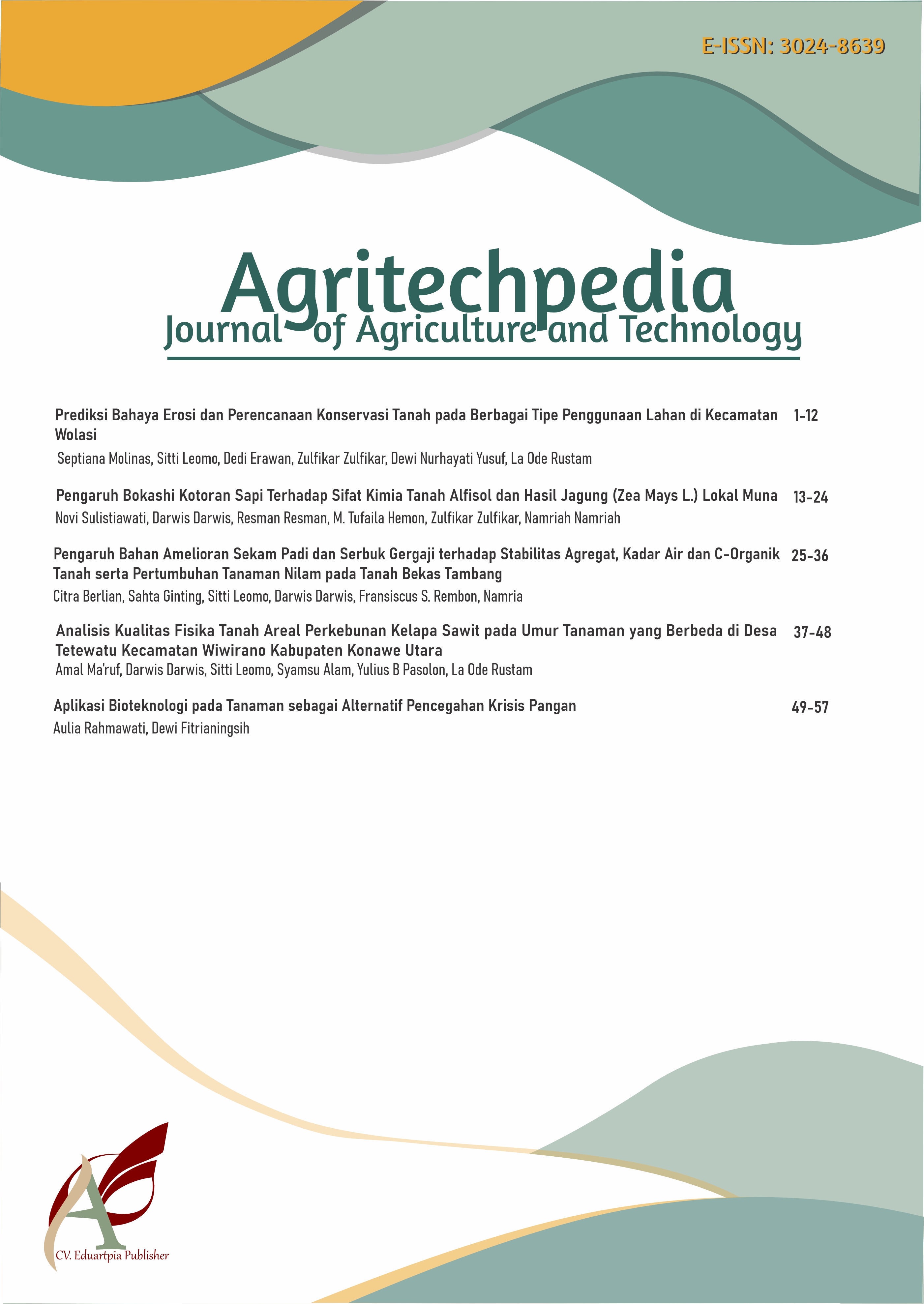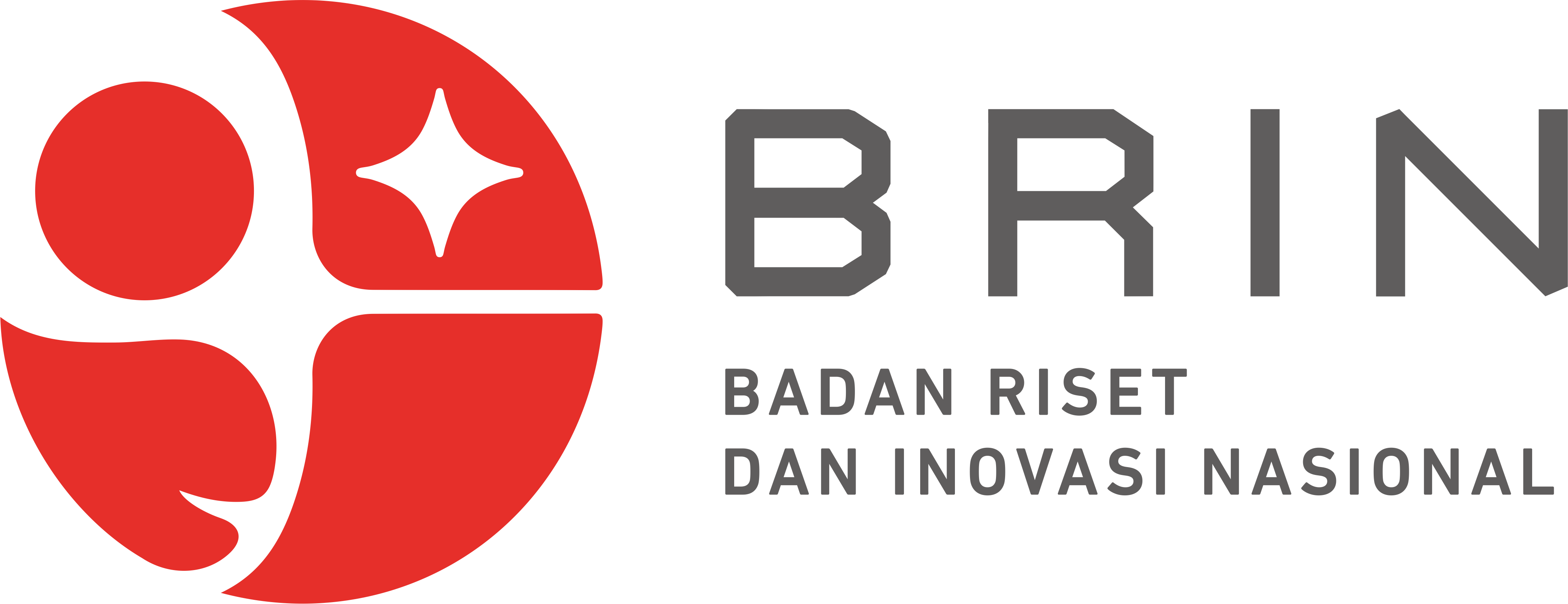Prediksi Bahaya Erosi dan Perencanaan Konservasi Tanah pada Berbagai Tipe Penggunaan Lahan di Kecamatan Wolasi
Keywords:
Erosion, USLE method, conservation techniques, land useAbstract
The purpose of this study was to determine the level of erosion in order to obtain a reference for soil conservation in various types of land use in Wolasi District. This research was conducted in October-December 2022 in Wolasi District. This study uses a survey method of erosion prediction analysis carried out by the USLE method. The results showed that the highest erosion rate was found in the use of Shrubland land, which was 611,39 tons/ha/year, while the lowest erosion was found in the use of Natural Forest land, which was 0,129 tons/ha/year. The highest allowable erosion was found in the land use of pepper plantations, which was 32.44 tonnes/ha/year, while the lowest allowable erosion was found in the use of cashew plantations, namely 25.74. The highest erosion hazard index was found in shrub land use, namely 21,05 tonnes/ ha/year, while the lowest erosion hazard index was found in the use of natural forest land, which was 0,0047 tons/ha/year. The soil conservation technique used in Wolasi District is a mechanical conservation technique with treatment like traditional terraces, while the vegetative conservation technique is with treatment like ripening terraces using plant remains. Vegetative and mechanical soil conservation techniques are applied to various types of land use in Wolasi District, such as mixed gardens, pepper gardens, cashew plantations, shrubs, natural forests, and paddy fields.
Keywords : Erosion, USLE method, conservation techniques, land use
Downloads
Published
How to Cite
Issue
Section
License
Copyright (c) 2023 Septiana Molinas, Sitti Leomo, Dedi Erawan, Zulfikar Zulfikar, Dewi Nurhayati Yusuf, La Ode Rustam

This work is licensed under a Creative Commons Attribution-ShareAlike 4.0 International License.
Authors retain copyright and grant the journal right of first publication with the work simultaneously licensed under a Creative Commons Attribution-ShareAlike 4.0 International License that allows others to share the work with an acknowledgment of the work’s authorship and initial publication in this journal
















